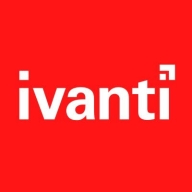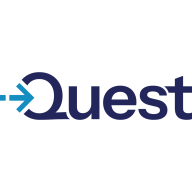


KACE Systems Management Appliance and Ivanti Neurons for MDM are competing in the endpoint management and mobile device management arena. KACE stands out with user-friendliness and cost-effectiveness, whereas Ivanti is superior in security and integration capabilities.
Features: KACE Systems Management Appliance excels in endpoint management with software distribution, asset management, and patch management. It efficiently handles large installations remotely and manages complex IT environments. Ivanti Neurons for MDM boasts strong security features, zero-touch deployment, and comprehensive compliance reporting, with seamless integration into business applications.
Room for Improvement: KACE needs to enhance scalability, interface simplicity, and patch management. The interface complexity requires improvement to ensure administrative ease. Ivanti Neurons for MDM requires improvement in asset management and MDM functionalities to better compete in the market. Both solutions would benefit from a more intuitive interface and more accessible scalability options.
Ease of Deployment and Customer Service: KACE offers varied deployment options, with a preference for on-premises solutions and is noted for its responsive technical support. Ivanti Neurons for MDM is adaptable for hybrid and cloud environments but may have slightly less efficient customer service than KACE.
Pricing and ROI: KACE Systems Management Appliance is competitively priced, delivering good ROI, especially for larger deployments with significant time savings and operational efficiencies. Ivanti Neurons for MDM, while more expensive, offers valuable security features, which justify its cost for many. Both solutions provide different pricing models that align with distinct business needs, but KACE is often seen as more straightforward and cost-effective in extensive endpoint management scenarios.
| Product | Market Share (%) |
|---|---|
| Microsoft Intune | 32.6% |
| KACE Systems Management Appliance (SMA) | 1.9% |
| Ivanti Neurons for MDM | 3.5% |
| Other | 62.0% |



| Company Size | Count |
|---|---|
| Small Business | 116 |
| Midsize Enterprise | 46 |
| Large Enterprise | 152 |
| Company Size | Count |
|---|---|
| Small Business | 3 |
| Midsize Enterprise | 2 |
| Large Enterprise | 3 |
| Company Size | Count |
|---|---|
| Small Business | 8 |
| Midsize Enterprise | 20 |
| Large Enterprise | 15 |
Microsoft Intune provides centralized management of mobile devices and applications, ensuring security, compliance, and productivity through integration with Microsoft services like Microsoft 365 and Azure Active Directory.
Organizations use Intune for managing mobile devices and applications, enhancing security and compliance across platforms. With features like single sign-on, conditional access, and zero-touch deployment via Autopilot, it facilitates efficient operations. Intune's scalability, easy enrollment, and capabilities such as remote wipe support diverse device management, offering robust data protection and efficient operation. Despite its features, improvement areas include reporting, compatibility with non-Microsoft devices, and better support for macOS and Linux devices.
What are the key features of Microsoft Intune?
What benefits should users look for in reviews?
In industries such as finance, healthcare, and education, Microsoft Intune is implemented to ensure secure and compliant device management. Companies leverage its capabilities to deploy security policies and manage both corporate-owned and BYOD environments, facilitating a unified approach to data protection and compliance.
Everywhere Work is here
Dealing with increasing demand for devices, applications and platforms?
Ivanti Neurons for MDM is your single solution to manage iOS, iPadOS, Android, macOS, ChromeOS and Windows.
Cloud‑based device management and security
Secure and manage endpoints running iOS, iPadOS, Android, macOS, ChromeOS and Windows.
Simple onboarding and provisioning process
Quickly and easily onboard devices and provision them over the air with all the apps, settings and security configurations they need.
Seamless, productive user experience
Deliver a delightful, native user experience across any device and OS while improving productivity.
Reduce the complexity and cost of endpoint management
Manage and protect any iOS, iPadOS, Android, macOS, ChromeOS, Windows and VR/XR device, from a single cloud-based solution.
Manage devices everywhere business happens
Know the devices your supply chain workers rely on are updated and in good operating condition, ready for the day’s business.
KACE Systems Management Appliance offers integration capabilities, efficient image deployment, and comprehensive asset management. It supports centralized management across diverse devices and locations, simplifying IT processes and enhancing security.
KACE Systems Management Appliance provides single-pane visibility for endpoint management, mass software deployment, automated patch management, robust scripting, and detailed inventory tracking. It streamlines IT management and improves cyber-security compliance through remote software updates and centralized IT request handling. Despite struggles with scalability and the need for interface improvements, it enables efficient device imaging, script automation, and network management through detailed reporting. Organizations find it effective for software deployment, asset management, and endpoint monitoring, serving thousands of IoT devices and desktops.
What are the key features of KACE Systems Management Appliance?In healthcare, KACE Systems Management Appliance is used for maintaining device compliance and security standards. Educational institutions benefit from its capabilities to manage large numbers of endpoints across campuses. In finance, it aids in strict compliance requirements through automated patch management and detailed reporting. Retail sectors leverage its asset management features to streamline operations across numerous locations.
We monitor all Unified Endpoint Management (UEM) reviews to prevent fraudulent reviews and keep review quality high. We do not post reviews by company employees or direct competitors. We validate each review for authenticity via cross-reference with LinkedIn, and personal follow-up with the reviewer when necessary.